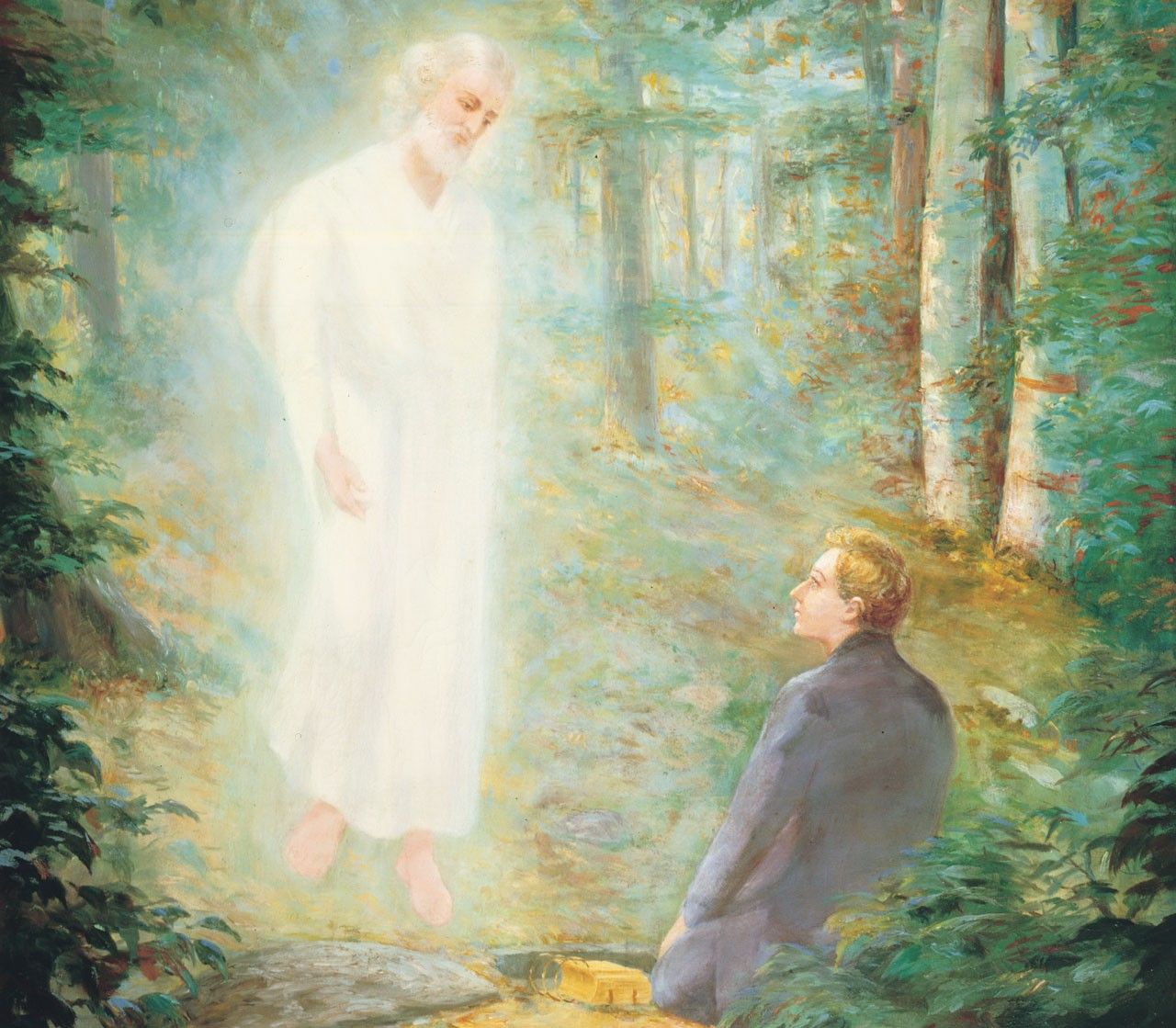Lewis A. Ramsey’s Painting of the Angel Moroni
Museum Treasures
Church leaders commissioned this painting from artist Lewis A. Ramsey in 1923 for the centennial of Moroni’s first visit to Joseph Smith. It was perhaps the first depiction of this sacred event in Church history by a trained artist, and for many years it was included in the large-print edition of the Book of Mormon.

In 1823 the angel Moroni revealed to Joseph Smith the location of the golden plates containing the sacred record known as the Book of Mormon. To prepare Joseph for his role in translating this record, Moroni instructed him to return to the same spot each year to be taught. Finally, on September 22, 1827, Moroni gave Joseph custody of the plates with instructions to protect and translate them.
Church leaders commissioned this painting from artist Lewis A. Ramsey in 1923 for the centennial of Moroni’s first visit to Joseph Smith.
The painting was displayed in the Bureau of Information, an early visitors’ center on Temple Square in Salt Lake City. In the early 1960s, the Bureau of Information was demolished, and the painting was moved into storage. For a time, Church President Ezra Taft Benson kept the painting in his apartment. It was put on exhibit in the Church History Museum in 1990 and has been stored there ever since.1
An Artist of Faith
Lewis Ramsey was well known for his landscapes, especially of national parks such as Zion, the Grand Canyon, and Yellowstone. But it was his religious art that meant the most to him. He studied art in Chicago, in Boston, and at the Académie Julian in Paris, where he earned high honors. His wife, Bessie, related, “Had he remained in Paris he should certainly be known among the international painters of today. But he believed his mission was in the upbuilding of Zion.”2
He painted a portrait of the Prophet Joseph Smith—which was highly praised by some who had known the Prophet personally3—as well as murals for the Laie Hawaii Temple. But his best-known works are his many depictions of Moroni revealing the plates to Joseph Smith.
The first version of this scene was an illustration for From Plowboy to Prophet, a 1912 children’s book about Joseph Smith. A second version was included in the September 1914 Improvement Era.4 Other versions were painted for Church buildings in Utah, Oregon, and Illinois, as well as a Church-owned hospital in Idaho.
In 1919, Lewis painted what is perhaps the first oil version of the scene as a mural for the original 11th Ward building in Salt Lake City. When the building was demolished in 1961, the section of the wall containing the mural was carefully removed and stored. Beginning in 1972, the painting underwent a three-year restoration process, after which it was unveiled in the new 11th Ward building.5
With so many versions of the picture, some people have wondered which may be considered the original. When one potential buyer asked the artist’s wife about a particular version, she responded:
“The question is raised as to whether the painting is an original. It is not the only one of these paintings in existence for it was not Lewis’ purpose to make only one. His idea was to have it seen as much as possible, that testimonies might be gained. . . .
“I should also add that any painting made of this subject by Bro. Ramsey is an original. It is his design and conception, and when thousands have never seen any of the paintings and when you consider the influence of the painting it is too bad there are not a great many more.”6
Some criticized the artist for depicting the scene in a forest,7 since the Hill Cumorah had no trees at the time Lewis was painting. At the time the Prophet received the plates, however, the hill was covered with trees.8 The artist had worked closely with assistant Church historian B. H. Roberts to confirm this and other details, such as the Prophet’s descriptions of Moroni and the plates.9
The legacy of this painted scene has been significant. It was perhaps the first depiction of this sacred event in Church history by a trained artist, and for many years it was included in the large-print edition of the Book of Mormon. Thousands of people have seen versions of it in various meetinghouses as well as at the Church History Museum. Many have been touched by its beauty and especially by the truthfulness of its message.